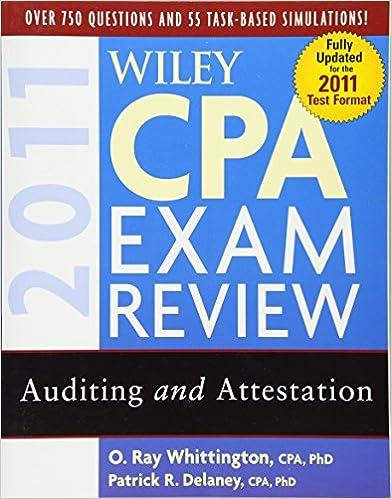Item 4 In the case below, the original source material is given along with a sample of student work. Determine the type of plagiarism by clicking the appropriate radio button. Original Source Material Student Version Analysis of patterns in time (APT) is a method for gathering information about observable phenomena such that probabilities of temporal patterns of events can be estimated empirically. If appropriate sampling strategies are employed, temporal patterns can be predicted from APT results. Finally, APT is compared to the linear models approach and event history analysis. The major difference is that in APT there is no mathematical model assumed to characterize relations among variables. In APT the model is the temporal pattern being investigated. APT is an empirical approach to observing and coding phenomena by using mutually exclusive and exhaustive categories within multiple classifications (Frick, 1990). Once these data have been collected, researchers specify APT queries to calculate the probability of joint and/or sequential patterns of interest. In effect, researchers create measures of temporal patterns by counting the occurrences of these coded patterns. According to Frick, Analysis of Patterns in Time is different from the linear models approach of measuring variables separately and using statistics to analyze their relations. References: Frick, T. (1990). Analysis of Patterns in Time (APT): A Method of Recording and Quantifying Temporal Relations in Education. American Educational Research Journal, 27(1), 180-204. References: Frick, T. (1990). Analysis of Patterns in Time (APT): A Method of Recording and Quantifying Temporal Relations in Education. American Educational Research Journal, 27(1), 180-204. Which of the following is true for the Student Version above? Student Version Original Source Material Analysis of patterns in time (APT) is a method for gathering information about observable phenomena such that probabilities of temporal patterns of events can be estimated empirically. If appropriate sampling strategies are employed, temporal patterns can be predicted from APT results. Finally, APT is compared to the linear models approach and event history analysis. The major difference is that in APT there is no mathematical model assumed to characterize relations among variables. In APT the model is the temporal pattern being investigated. APT is an empirical approach to observing and coding phenomena by using mutually exclusive and exhaustive categories within multiple classifications (Frick, 1990). Once these data have been collected, researchers specify APT queries to calculate the probability of joint and/or sequential patterns of interest. In effect, researchers create measures of temporal patterns by counting the occurrences of these coded patterns. According to Frick, Analysis of Patterns in Time is different from the linear models approach of measuring variables separately and using statistics to analyze their relations. References: Frick, T. (1990). Analysis of Patterns in Time (APT): A Method of Recording and Quantifying Temporal Relations in Education. American Educational Research Journal, 27(1), 180-204. References: Frick, T. (1990). Analysis of Patterns in Time (APT): A Method of Recording and Quantifying Temporal Relations in Education. American Educational Research Journal, 27(1), 180-204. Item 4 In the case below, the original source material is given along with a sample of student work. Determine the type of plagiarism by clicking the appropriate radio button. Original Source Material Student Version Analysis of patterns in time (APT) is a method for gathering information about observable phenomena such that probabilities of temporal patterns of events can be estimated empirically. If appropriate sampling strategies are employed, temporal patterns can be predicted from APT results. Finally, APT is compared to the linear models approach and event history analysis. The major difference is that in APT there is no mathematical model assumed to characterize relations among variables. In APT the model is the temporal pattern being investigated. APT is an empirical approach to observing and coding phenomena by using mutually exclusive and exhaustive categories within multiple classifications (Frick, 1990). Once these data have been collected, researchers specify APT queries to calculate the probability of joint and/or sequential patterns of interest. In effect, researchers create measures of temporal patterns by counting the occurrences of these coded patterns. According to Frick, Analysis of Patterns in Time is different from the linear models approach of measuring variables separately and using statistics to analyze their relations. References: Frick, T. (1990). Analysis of Patterns in Time (APT): A Method of Recording and Quantifying Temporal Relations in Education. American Educational Research Journal, 27(1), 180-204. References: Frick, T. (1990). Analysis of Patterns in Time (APT): A Method of Recording and Quantifying Temporal Relations in Education. American Educational Research Journal, 27(1), 180-204. Which of the following is true for the Student Version above? Student Version Original Source Material Analysis of patterns in time (APT) is a method for gathering information about observable phenomena such that probabilities of temporal patterns of events can be estimated empirically. If appropriate sampling strategies are employed, temporal patterns can be predicted from APT results. Finally, APT is compared to the linear models approach and event history analysis. The major difference is that in APT there is no mathematical model assumed to characterize relations among variables. In APT the model is the temporal pattern being investigated. APT is an empirical approach to observing and coding phenomena by using mutually exclusive and exhaustive categories within multiple classifications (Frick, 1990). Once these data have been collected, researchers specify APT queries to calculate the probability of joint and/or sequential patterns of interest. In effect, researchers create measures of temporal patterns by counting the occurrences of these coded patterns. According to Frick, Analysis of Patterns in Time is different from the linear models approach of measuring variables separately and using statistics to analyze their relations. References: Frick, T. (1990). Analysis of Patterns in Time (APT): A Method of Recording and Quantifying Temporal Relations in Education. American Educational Research Journal, 27(1), 180-204. References: Frick, T. (1990). Analysis of Patterns in Time (APT): A Method of Recording and Quantifying Temporal Relations in Education. American Educational Research Journal, 27(1), 180-204








